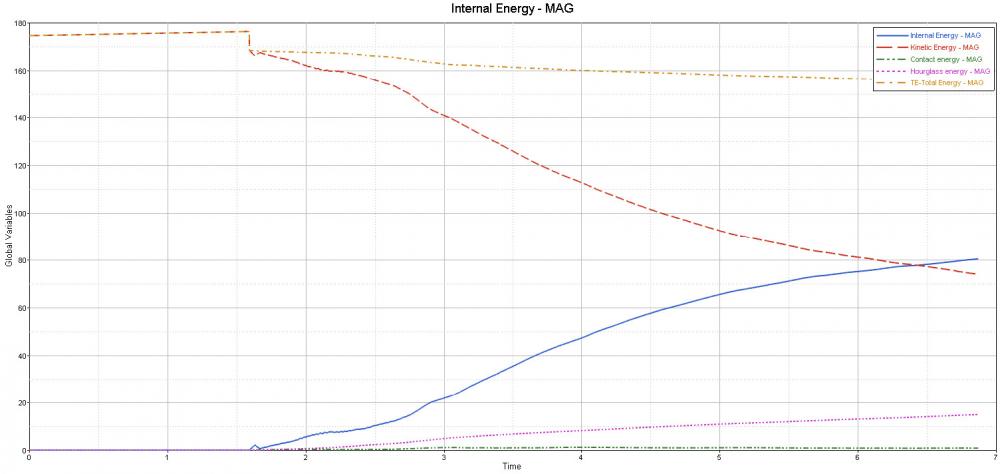Hello everyone,
As we all know, hourglass energy is not a physical energy and should be small. However, in my simulation, the hourglass energy was found to be large (figure as follow). So how to decrease the hourglass energy? Which options and parameters should I use?
<?xml version="1.0" encoding="UTF-8"?>
By the way, what's the possible reason for the dropping of total energy?
Best Wishes
Roy